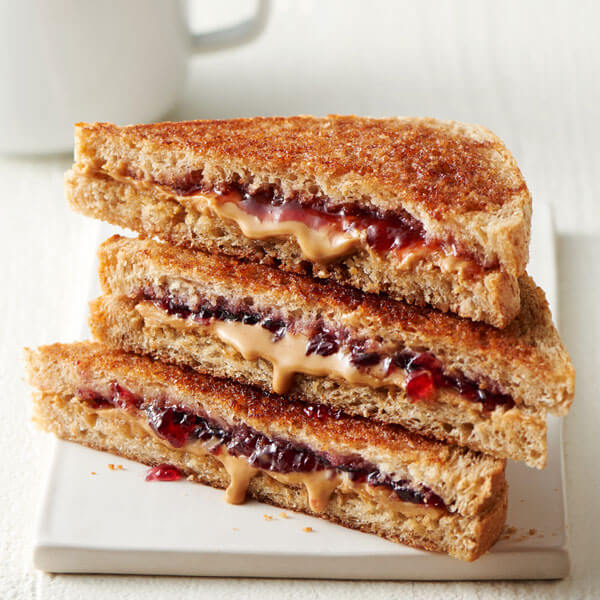
Word of the Day: Gustatory
Today’s word of the day, thanks to the Mirriam-Webster Dictionary website, is gustatory. It is an adjective, and it means “relating to or associated with eating or the sense of taste.” Webster’s says further, “Gustatory is a member of a finite set of words that describe the senses with which we encounter our world, the other members being visual, aural, olfactory, and tactile. Like its peers, gustatory has its roots in Latin—in this case, the Latin word gustare, meaning ‘to taste.’ Gustare is a somewhat distant relative of several common English words, among them choose and disgust, but it is a direct ancestor of gustatory, gustation, meaning ‘the act or sensation of tasting,’ and degustation, meaning ‘the action or an instance of tasting especially in a series of small portions.’”
Gustatory is pronounced / ˈgʌs təˌtɔr i, -ˌtoʊr i /, with the emphasis on the first syllable and a secondary emphasis on the third syllable. The word entered the English language, according to www.etymonline.com, in the “1680s, from Latin gustatus “sense of taste; a taste” (noun use of past participle of gustare ‘to taste;’ from PIE root *geus- ‘to taste; to choose’) + -ory.” Just a reminder: PIE stands for Proto-Indo-European, the parent language of all the Indo-European languages, including all the Romance languages (the descendants of the Roman language Latin), all the Germanic languages (including English), Hindu, Urdu, Sanskrit, the Slavic languages, the Celtic languages, and many more.
One of the funny things about peanuts is that they are not nuts—they are legumes. Legumes are “herbaceous plants, shrubs, trees, and vines having usually compound leaves, clusters of irregular, keeled flowers, and fruit in the form of a pod splitting along both sides, and including beans, peas, acacia, alfalfa, clover, indigo, lentil, mesquite, mimosa, and peanut.” That’s right—a peanut is a fruit.
They’ve been around for at least 8,000 years or so, and for some time people used peanuts as hog feed, according to D. H. Putnam, et al. (https://hort.purdue.edu/newcrop/afcm/peanut.html). In the 1800s, particularly in Virginia, peanuts began to be grown as a commercial crop, mostly for the oil. During and after the Civil War, Union soldiers began to eat them and even took them home after the war was over.
While it is possible that the Incas in modern-day Peru first learned to ground the peanut and turn it into a paste, credit for the first peanut butter didn’t come until 1890 (or maybe later), when, according to the story, a St. Louis physician developed a kind of peanut butter for his elderly patients, whose teeth made it hard for them to chew meat (the peanut is a good source of protein). Peanut butter was introduced at the 1904 World’s Fair in St. Louis. Peanut butter became a popular food during World War I. But it had a problem. The meat and the oil would separate, and the product had a very short shelf life.
Then, in 1922 or 23, Joseph L. Rosefield, a food businessman from California, het upon a method of homogenizing the peanut spread that kept the oil and the meat from separating, and which allowed the product to be kept on a shelf for as long as a year. He licensed the process to another company, which began to manufacture his homogenized peanut butter as Peter Pan. In the early 1930s, Rosefield began manufacturing his own peanut butter under the name of Skippy.
The patent came on February 13, 1923, almost 100 years to this date.
Jon Michaud, writing in The New Yorker in 2012, wrote, “When I left Washington, D.C., for school in Northern Ireland, I packed my bags with jars of Skippy. Not much had changed. ‘Mashed peanuts on bread?’ my friends in Belfast asked, incredulously—as if peanuts were synonymous with maggots. The American love of peanut butter is as mystifying to many Britons as the British love of Marmite (yeast extract on toast?) is to me” (https://www.newyorker.com/books/page-turner/a-chunky-history-of-peanut-butter).
Personally, I love peanut butter. I prefer chunky to creamy, but that just makes me a stereotypical male. I love it with jelly, with banana, and chocolate chips, and even with Nutella. It’s inexpensive, relative to other forms of protein. I don’t eat it straight from the jar with a spoon, but I’ve known people who did. It is the kind of gustatory experience that I delight in, and I’m thankful for Joseph Rosefield and his invention.
The picture is from the landolakes website, and it is, quite obviously, a PB&J sandwich, grilled (https://www.landolakes.com/recipe/21330/grilled-peanut-butter-jelly-sandwich/). Mmmmmm.